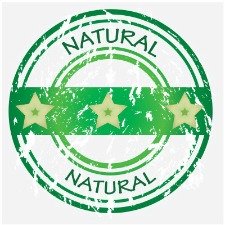
Traditionally making soap was an annual or semi annual event that took place, often in the fall, on the homesteads and farms of early settlers to make use of the large supply of tallow and the lard.
Making soap was an activity that usually took place outdoors because of the very strong odour given off by the fat.
Today making soap can be viewed differently and supplies have a more global twist to them. Now many of the required items are available online.
Creating your own soap allows you to be very imaginative and allows you to test and use healthier ingredients.
We use soap every day for a multiple of reasons. Soap is used on and absorbed by our largest organ ― our skin.
What makes handmade soap more natural than commercial soap?
Commercial soap is not always soap. Many large companies extract the glycerin (natural by-product of making soap) from their product to sell for profit.
Once glycerine is gone from their product, all these large companies are left with is detergent. That is why these fake bars of soap are called “Beauty Bars” or “Moisturizing Bars”.Due to the unnatural ingredients they cannot call it soap. How ironic it that?
Your best ways of knowing what is going into your body is to read the labels. You might be shocked by what you find goes into some of these products.
The term NATURAL is somewhat a subjective term.
There is not yet a regulated definition for “natural” and everyone seems to have their own spin or tolerance level to what is or is not natural. Soap can be made with natural supplies, which means ingredients that can be found in nature and are healthy for your skin.
Personally, I think that the definition of natural should be thought of in layers and degrees and more specifically what you are looking for.

There are typically 2 types of scents synthetic and natural. You can scent your soap with fragrance. This is a perfume which is synthetic. Natural scents come from essential oils. Be aware that essential oils have varying quality grades.
Note that antibacterial soap often contain an ingredient called triclosan which is classified as a pesticide. Reading your labels allows you to know what goes onto your skin
Your skin may require a soap made with gentle ingredients and no fancy stuff. You may love the smell of Ocean Breeze and decide that it is worth having this little element deviate from the whole natural equation.
I guess that I know that by making my own soap, I am already one step ahead of industry’s standards. From this point, you need to consider what you feel is natural…
Many people feel that natural soap can contain lard or other ingredients from the grocery store because it is more natural than what is in commercial soap and they are right. Alternatively, consider some basic soap recipes.
Others want to abstain from using animal products or inferior oils for their natural soap. The list of fats, oils and butters for making soap is bountiful from olive oil, to shea butter and beeswax. Of course there are grade qualities to these products and some can be certified organic.
If you are wondering ?????? if you can get a natural soap base for melt and pour soap, they are not all created equal and you need to read the labels.
It seems the most natural process is cold process method.
Colour and scents are added to soap for the experience and sometimes therapeutic properties. There are more natural choices for colouring your soap and many come from your kitchen.